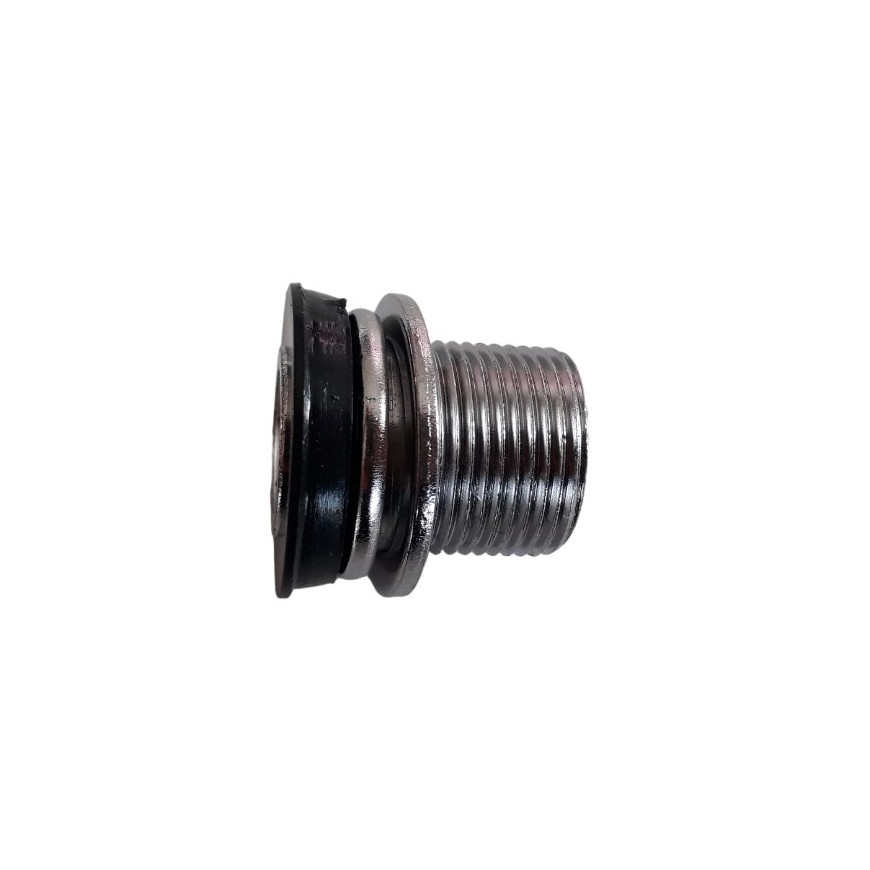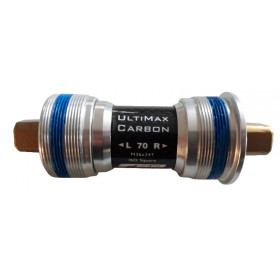 zoom_in
zoom_in
Crank screw shimano octalink Isis
- Octalink Isis
- 7 Items
- New
€2.90 VAT included
Shimano crank arm bolt: Octalink or ISIS ? How to choose the right one
In the world of cycling, every component plays a crucial role in your bike’s performance and reliability. The crankset is no exception — it’s responsible for transferring your pedaling power to the drivetrain. And right at the heart of this mechanism is a small but vital part that’s often overlooked: the Shimano crank arm bolt, especially in Octalink and ISIS configurations. This bolt secures the crank arm to the bottom bracket spindle, ensuring a strong and lasting connection.
Understanding Octalink and ISIS standards
Before diving into the specifics of crank bolts, it’s important to understand the two main interface types they correspond to:
Octalink: Shimano’s proprietary standard
Octalink, developed by Shimano, is a splined interface (8 splines) that connects the bottom bracket spindle to the crank arms. It was introduced as a stronger and more precise alternative to the traditional square taper (JIS) design.
Shimano-compatible Octalink crank bolts are typically M15 or M8 threaded, depending on the model, and fit deep into the hollow spindle. Most come with a hex (Allen) head for safe tightening using a torque wrench.
ISIS Drive: the open-source alternative
The ISIS Drive (International Splined Interface Standard) is an open, non-proprietary standard developed as an alternative to Octalink. It also uses a splined interface (10 splines) but is not compatible with Shimano components.
ISIS crank bolts are similar in appearance to Octalink bolts, but may differ slightly in thread size, length, or head type (Allen or Torx). Choosing the right bolt for your ISIS crankset is essential to avoid damaging threads or introducing unwanted play.
Key features of Shimano crank bolts
Below are the typical specifications of Shimano-compatible Octalink crank bolts:
-
Thread type: M15x1 or M8x1.0 depending on crankset model (note: not for Hollowtech systems).
-
Bolt head: 8 mm or 10 mm Allen key.
-
Length: usually between 18 and 25 mm depending on spindle depth.
-
Material: treated steel or stainless steel for better corrosion resistance.
-
Washer: some versions include an integrated washer for even torque distribution.
Pro tip: proper torque is key
Correct torque is critical. A loose crank bolt can cause play in the crankset and wear out the splines prematurely. Over-tightening may strip the threads or damage the spindle. Always use a torque wrench, and aim for a torque setting between 35 and 50 Nm, depending on manufacturer guidelines.
Which crank bolt should you choose?
Before buying a replacement bolt, make sure you know the exact type of your crankset and bottom bracket. A Shimano Octalink crankset requires a genuine Shimano-compatible bolt, while an ISIS crankset needs a bolt designed specifically for that system.
Good to know:
-
Shimano Octalink bolts are not compatible with square taper or Hollowtech II cranksets.
-
ISIS bolts are often interchangeable between brands like Truvativ, FSA, etc., but always check specifications to be safe.
Conclusion
The Shimano crank bolt may be a small component, but it plays a big role in the stiffness, reliability, and longevity of your drivetrain. Whether you're riding with a Shimano Octalink crankset or an ISIS system, make sure to choose a high-quality bolt that fits your spindle perfectly and install it with the right torque. A well-mounted crank arm means smoother rides and fewer mechanical issues down the road.





